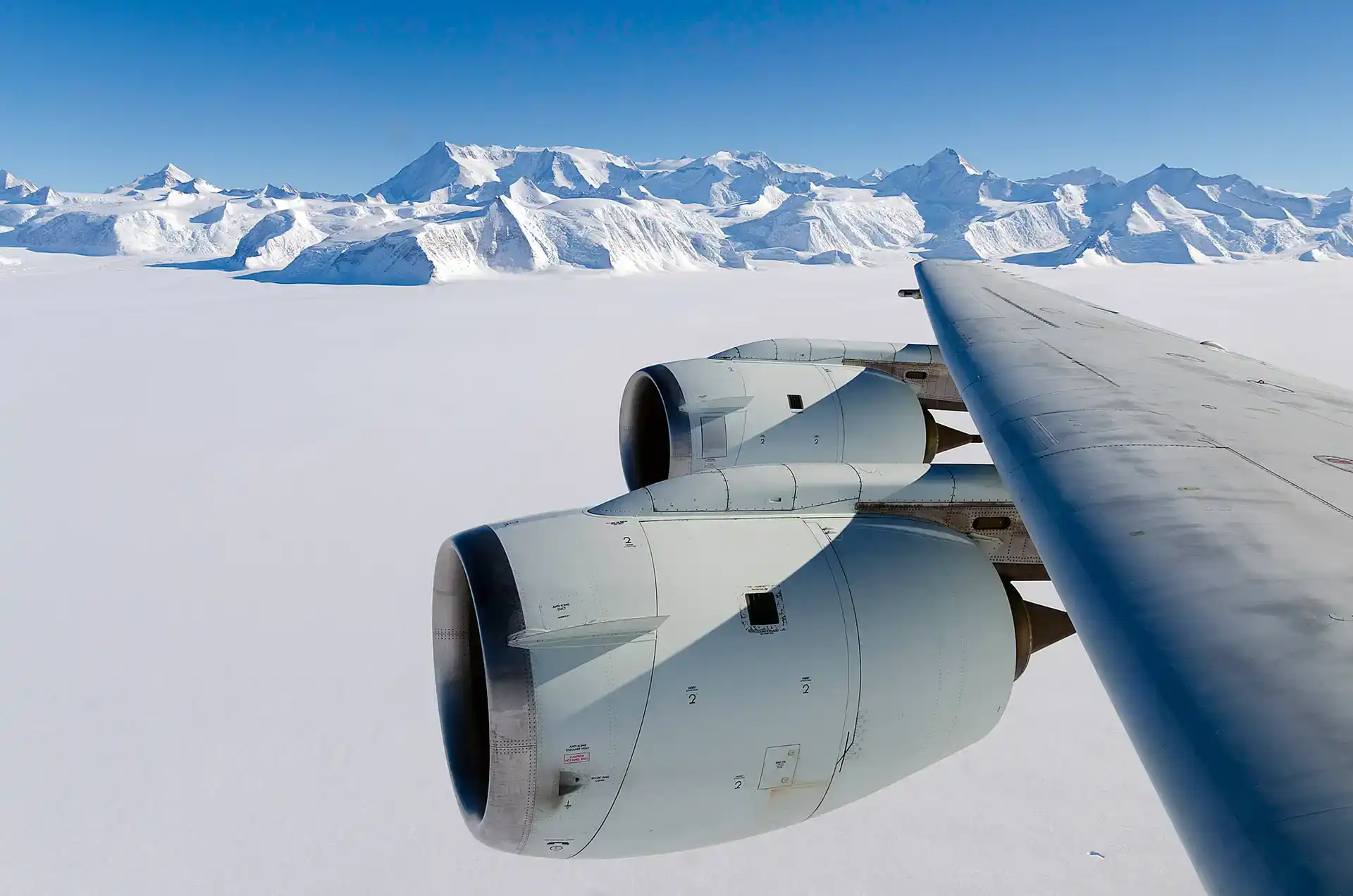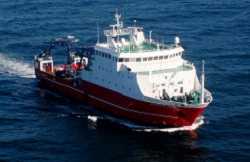
Overview
The R/V Sarmiento de Gamboa is an oceanographic research vessel operated by the Spanish National Research Council. The ship is equipped with instrumentation and laboratories that enable the study of global ocean circulation, marine biodiversity, fishery resource estimation, geology, hydrography, and oceanography. Typical research voyages can include up to 42 people, including crew, scientists, and technicians, and last as long as 40 days.
Online information
Related Campaigns & Instruments
Review the instruments operated on this platform for each of these field campaigns
Slide 1 of 2
SPURS
Salinity Processes in the Upper Ocean Regional Study
2012—2017
Subtropical North Atlantic Ocean, Tropical Eastern Pacific Ocean
view all deployment dates
2 Deployments
· 41 Data Products| 2012-08-16 | 2013-10-13 |
| 2016-08-13 | 2017-11-17 |
Conductivity, Temperature, and Depth (CTD) sensors are in situ instruments used to measure water depth, pressure, salinity, temperature, and density in the ocean. CTD sensors can be deployed on various water-based platforms such as autonomous underwater vehicles (AUVs), buoys, gliders, or research vessels. When mounted on a vessel, CTD sensors are usually attached to a rosette and then lowered to the seafloor to record water properties. These sensors typically sample at 30 Hz and can provide accurate measurements at specific water depths according to the researcher's needs.
Earth Science > Oceans > Ocean Pressure > Water Pressure
Earth Science > Oceans > Bathymetry/seafloor Topography > Water Depth
Earth Science > Oceans > Salinity/density > Conductivity
Earth Science > Oceans > Salinity/density > Density
Earth Science > Oceans > Salinity/density > Salinity
Earth Science > Oceans > Ocean Temperature > Water Temperature
Earth Science > Oceans > Salinity/density
A thermosalinograph (TSG) is an in situ shipborne instrument used to measure sea surface temperature and conductivity. TSGs are typically mounted near the ship’s seawater intake where they collect continuous measurements. A TSG uses a conductivity cell and a thermistor cell to measure conductivity and temperature from underway vessels. These measurements can be used to derive salinity and other ocean parameters.
Earth Science > Oceans > Ocean Temperature > Sea Surface Temperature
Earth Science > Oceans > Salinity/density > Salinity
Earth Science > Oceans > Salinity/density > Conductivity
Earth Science > Oceans > Salinity/density
Earth Science > Oceans > Ocean Temperature
Generic-Atmospheric State (Gen-AtmsState) refers to non-specific instruments on a platform used for measurements of atmospheric state parameters. These are typically in situ sensors that measure temperature, pressure, humidity, and wind speed/direction. Types of atmospheric state instruments include thermometers, hygrometers, barometers, and anemometers.
Earth Science > Atmosphere > Atmospheric Water Vapor
Earth Science > Atmosphere > Atmospheric Pressure
Earth Science > Atmosphere > Atmospheric Water Vapor > Water Vapor Indicators > Humidity
Earth Science > Atmosphere > Atmospheric Temperature > Surface Temperature > Air Temperature
Earth Science > Atmosphere > Atmospheric Winds > Upper Level Winds > Wind Direction
Earth Science > Atmosphere > Atmospheric Winds > Upper Level Winds > Wind Speed
Earth Science > Atmosphere > Atmospheric Pressure > Atmospheric Pressure Measurements
Earth Science > Atmosphere > Atmospheric Winds > Surface Winds > Wind Direction
Earth Science > Atmosphere > Atmospheric Temperature
Earth Science > Atmosphere > Atmospheric Winds > Surface Winds > Wind Speed
Earth Science > Atmosphere > Atmospheric Winds
The Acoustic Doppler Current Profiler (ADCP) is an in situ acoustic sensor used to measure ocean currents. ADCP utilizes the Doppler effect to detect sound waves, providing measurements of the speed and direction of currents throughout the water column. It can be easily mounted on various water platforms such as ships, buoys, and autonomous underwater vehicles (AUVs). Additionally, it can be deployed on the seafloor to deliver profile measurements of ocean currents.
Earth Science > Oceans > Ocean Acoustics
Earth Science > Oceans > Ocean Circulation > Ocean Currents

EXport Processes in the Ocean from RemoTe Sensing
2018—2021
Northeast Pacific Ocean, Northeast Atlantic
view all deployment dates
2 Deployments
· 0 Data Products| 2018-07-21 | 2018-09-13 |
| 2021-03-25 | 2021-06-01 |
Generic-Atmospheric State (Gen-AtmsState) refers to non-specific instruments on a platform used for measurements of atmospheric state parameters. These are typically in situ sensors that measure temperature, pressure, humidity, and wind speed/direction. Types of atmospheric state instruments include thermometers, hygrometers, barometers, and anemometers.
Earth Science > Atmosphere > Atmospheric Water Vapor
Earth Science > Atmosphere > Atmospheric Pressure
Earth Science > Atmosphere > Atmospheric Water Vapor > Water Vapor Indicators > Humidity
Earth Science > Atmosphere > Atmospheric Temperature > Surface Temperature > Air Temperature
Earth Science > Atmosphere > Atmospheric Winds > Upper Level Winds > Wind Direction
Earth Science > Atmosphere > Atmospheric Winds > Upper Level Winds > Wind Speed
Earth Science > Atmosphere > Atmospheric Pressure > Atmospheric Pressure Measurements
Earth Science > Atmosphere > Atmospheric Winds > Surface Winds > Wind Direction
Earth Science > Atmosphere > Atmospheric Temperature
Earth Science > Atmosphere > Atmospheric Winds > Surface Winds > Wind Speed
Earth Science > Atmosphere > Atmospheric Winds
Generic-Chemistry Related Sensors (Gen-Chemistry) refers to non-specific instruments on a platform used for atmospheric chemistry measurements. These are typically in situ analyzers that measure various chemical compounds such as trace gases, halocarbons, volatile organic compounds, nitrates, aerosols, and other chemical species. Measurements can include mixing ratio, composition, particle size, optical properties, and particle size distribution.
Earth Science > Atmosphere > Atmospheric Chemistry > Trace Gases/trace Species
Earth Science > Atmosphere > Atmospheric Chemistry
Earth Science > Atmosphere > Air Quality > Volatile Organic Compounds
Earth Science > Atmosphere > Aerosols
Earth Science > Atmosphere > Aerosols > Aerosol Particle Properties
Earth Science > Atmosphere > Atmospheric Chemistry > Halocarbons And Halogens
Earth Science > Atmosphere > Air Quality
Earth Science > Atmosphere > Atmospheric Chemistry > Carbon And Hydrocarbon Compounds
Conductivity, Temperature, and Depth (CTD) sensors are in situ instruments used to measure water depth, pressure, salinity, temperature, and density in the ocean. CTD sensors can be deployed on various water-based platforms such as autonomous underwater vehicles (AUVs), buoys, gliders, or research vessels. When mounted on a vessel, CTD sensors are usually attached to a rosette and then lowered to the seafloor to record water properties. These sensors typically sample at 30 Hz and can provide accurate measurements at specific water depths according to the researcher's needs.
Earth Science > Oceans > Ocean Pressure > Water Pressure
Earth Science > Oceans > Bathymetry/seafloor Topography > Water Depth
Earth Science > Oceans > Salinity/density > Conductivity
Earth Science > Oceans > Salinity/density > Density
Earth Science > Oceans > Salinity/density > Salinity
Earth Science > Oceans > Ocean Temperature > Water Temperature
Earth Science > Oceans > Salinity/density
Filter data products from this platform by specific campaigns, instruments, or formats.
Campaigns
CAMPAIGNS▼
Instruments
INSTRUMENTS▼
Formats
FORMATS▼
